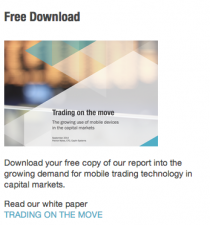In my previous post, I looked at the Bank of England (BofE) FX semi-annual FX survey data.
In this post, I want to look at some of the interesting changes in eFX ratios – the proportion of total FX that is traded electronically, that is the sum of single+Multi-dealer+ECN as a percentage of total volume. We will look at London and NY, and compare and contrast overall eFX ratios, and eFX ratios by product and by client segment.
eFX ratios by Product
Looking at the table and chart below, we see that the overall eFX ratio was 50% in NY (52% prev), compared to only 41% in London (42% prev), with spot eFX ratios dropping in both locations with NY down from 60% to 57%, and London down from 56% to 50%.
In NY all product groups saw falls in Pct change, with FX Options showing the biggest overall drop down from an eFX ratio of 15% to only 9%, a 40% fall over the period. Whereas in London, Spot, NDF and Fwds saw falls in eFX ratios whilst FX Options, FX Swaps and Curr Swaps saw increases in eFX ratios.

 Table and chart showing eFX ratios in London and NY by product and the Pct change between Oct 14 and Apr 15
Table and chart showing eFX ratios in London and NY by product and the Pct change between Oct 14 and Apr 15
eFX ratios by Client Segment
In terms of client segments, we again see contrasts between London and NY in terms of eFX ratios. The biggest increases in eFX ratios were in London with Other Banks showing a 14% increase compared to only +1% in NY. The biggest falls in eFX ratios was also London with Other Financial Institutions (what we call the Buyside), showing a -17% fall in eFX ratios, whilst in NY the same group only saw a -4% drop. Interestingly, in both centres Non-Financial Institutions (Corporates) showed an increase in eFX ratios.

 Table and chart showing eFX ratios in London and NY by client segment and the Pct change between Oct 14 and Apr 15
Table and chart showing eFX ratios in London and NY by client segment and the Pct change between Oct 14 and Apr 15
In terms of possible reasons for the overall drop in eFX ratios and the fall in Other Financial Institutions (buyside) eFX ratios, one could argue that the market is still suffering effects from the January EURCHF move.
Although overall volumes are down some 8% (see previous post), eFX ratios are being overly affected, as banks (and non-bank market markers), tighten their eFX risk systems, prompting perhaps a shift to voice for buyside firms for larger trades?
I would welcome comments from readers on other reasons for the falls in eFX ratios.
Filed under: FX, Paul Blank, Survey Results |



Leave a comment